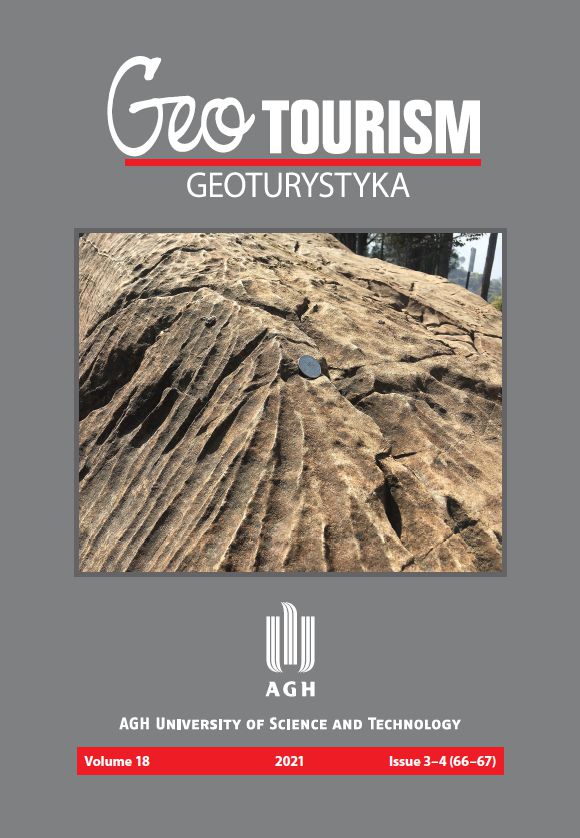The development of tourism in the Historical Silver Mine and the groundwater management system in Tarnowskie Góry – a case study of mining heritage tourism
DOI:
https://doi.org/10.7494/geotour.2021.3-4(66-67).3Abstrakt
This article presents the values of the Silesian mining heritage in the context of accessibility of the Zabytkowa Kopalnia Srebra (Historical Silver Mine) in the Tarnowskie Góry. Simultaneously, this is the largest, best-preserved and accessible historical
lead-silver mine in Poland with its unique, integrated historical groundwater management system of drainage adits and a potable water supply network. In this area, industrial heritage is now becoming a precious touristic and cultural value in and of itself. The scope of the article includes the characterization of all objects added to the UNESCO World Heritage List, the description of ground and underground tourist trails and the history of their accessibility. Not all underground workings have been included into the tourist trail, due to their preservation conditions, accessibility and mine safety measures. The paper also presents
a multi-faceted evaluation of the accessibility to all objects of mining heritage, including sites that are currently inaccessible, but still have the potential for tourism development.
##plugins.generic.usageStats.downloads##
##submission.downloads##
Opublikowane
Jak cytować
Numer
Dział
Licencja
##submission.license.cc.by3.footer##
Ten utwór jest dostępny na licencji Creative Commons Uznanie autorstwa 3.0 Unported.


